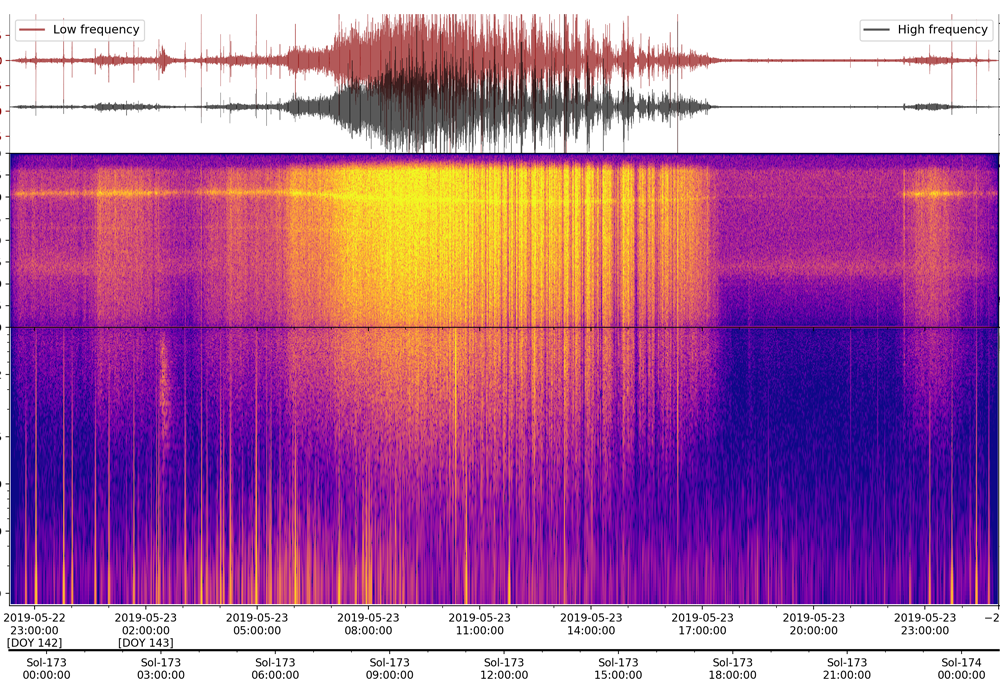 “…For many people, the idea of a “garbage patch” conjures up images of an island of trash floating on the ocean. In reality, these patches are almost entirely made up of tiny bits of plastic, called microplastics. Microplastics can’t always be seen by the naked eye. Even satellite imagery doesn’t show a giant patch of garbage. The microplastics of the Great Pacific Garbage Patch can simply make the water look like a cloudy soup. This soup is intermixed with larger items, such as fishing gear and shoes.”
“…For many people, the idea of a “garbage patch” conjures up images of an island of trash floating on the ocean. In reality, these patches are almost entirely made up of tiny bits of plastic, called microplastics. Microplastics can’t always be seen by the naked eye. Even satellite imagery doesn’t show a giant patch of garbage. The microplastics of the Great Pacific Garbage Patch can simply make the water look like a cloudy soup. This soup is intermixed with larger items, such as fishing gear and shoes.”
Science
Marsquakes Rock and Roll
 Fifty years after Apollo 11 astronauts deployed the first seismometer on the surface of the Moon, NASA InSight’s seismic experiment transmits data giving researchers the opportunity to compare marsquakes to moon and earthquakes.
Fifty years after Apollo 11 astronauts deployed the first seismometer on the surface of the Moon, NASA InSight’s seismic experiment transmits data giving researchers the opportunity to compare marsquakes to moon and earthquakes.
Seismologists operating the Marsquake Service at ETH Zurich literally rocked and rolled as they experienced, for the first time, two “marsquakes” in the university’s quake simulator. Researchers uploaded actual data from marsquakes detected on Martian solar day or Sol 128 and 173.The marsquakes were detected by the SEIS seismometer, whose highly sensitive electronics were delivered by the Aerospace Electronics and Instruments laboratory at ETH.
Not all earthquakes are created equal
 My two cents (2) about the July 2019 Southern California earthquake: recorded Richter magnitude M 7.1. Not bad huh? Pretty “high.” It makes me think sadly to some of our most recent earthquakes in my country, Italy: central Apennines in 2016 and northern Apennines in 2012. The magnitudes recorded were respectively M 6.0 and M 5.9. Seen this way they would seem just a bit weaker but they did a lot of damage and deaths…. I don’t know about you, but it makes me think.
My two cents (2) about the July 2019 Southern California earthquake: recorded Richter magnitude M 7.1. Not bad huh? Pretty “high.” It makes me think sadly to some of our most recent earthquakes in my country, Italy: central Apennines in 2016 and northern Apennines in 2012. The magnitudes recorded were respectively M 6.0 and M 5.9. Seen this way they would seem just a bit weaker but they did a lot of damage and deaths…. I don’t know about you, but it makes me think.
Columbia Goes to the Moon
 Fifty years ago, when astronauts first landed on the moon, they carried not only humanity’s highest hopes but an important experiment from Columbia.
Fifty years ago, when astronauts first landed on the moon, they carried not only humanity’s highest hopes but an important experiment from Columbia.
On the afternoon of July 20, 1969, Gary Latham ’65GSAS, a thirty-three-year-old geophysicist at Columbia’s Lamont-Doherty Geological Observatory, arrived at NASA’s Manned Spaceflight Center (now the Johnson Space Center) in Houston to witness the fulfillment of thousands of years of curiosity and wonder: humanity’s first attempt to land men on the moon…
The nightmare of teaching science in Italian schools
 I am now coming out of a short teaching experience in an international school in Italy. For a year I taught science and geography in their middle school. Today is my last day and while the kids are relaxing in their own way I am reflecting on a few things that this short experience has brought to my mind. Starting with the last one: all the kids, indiscriminately, relax using their mobile phones. One of my generation is immediately reminded of how we would have done, 45 years ago in middle school, to relax in an hour left free for leisure. I used to draw. Nobody had computers at home. Very rarely there were the first, now ridiculous, electronic games. I never had a game console in my entire life.
I am now coming out of a short teaching experience in an international school in Italy. For a year I taught science and geography in their middle school. Today is my last day and while the kids are relaxing in their own way I am reflecting on a few things that this short experience has brought to my mind. Starting with the last one: all the kids, indiscriminately, relax using their mobile phones. One of my generation is immediately reminded of how we would have done, 45 years ago in middle school, to relax in an hour left free for leisure. I used to draw. Nobody had computers at home. Very rarely there were the first, now ridiculous, electronic games. I never had a game console in my entire life.
Death bed
 Many are aware that dinosaurs disappeared nearly 66 million years ago, after a major climate change that made their environments inhospitable. Most people know about the dinosaurs disappearance, but few know that what happened at the end of the Mesozoic era was actually a mass extinction. Well, maybe even fewer people know that some clues of what happened in that period have been first found in central Italy, close to Saint Francis’ hometown, near a small city in the Apennines called Gubbio. The story is about father and son, Louis Alvarez, a Nobel prize physicist, and Walter Alvarez, a renown American geologist at Berkeley with a love for Italy.
Many are aware that dinosaurs disappeared nearly 66 million years ago, after a major climate change that made their environments inhospitable. Most people know about the dinosaurs disappearance, but few know that what happened at the end of the Mesozoic era was actually a mass extinction. Well, maybe even fewer people know that some clues of what happened in that period have been first found in central Italy, close to Saint Francis’ hometown, near a small city in the Apennines called Gubbio. The story is about father and son, Louis Alvarez, a Nobel prize physicist, and Walter Alvarez, a renown American geologist at Berkeley with a love for Italy.